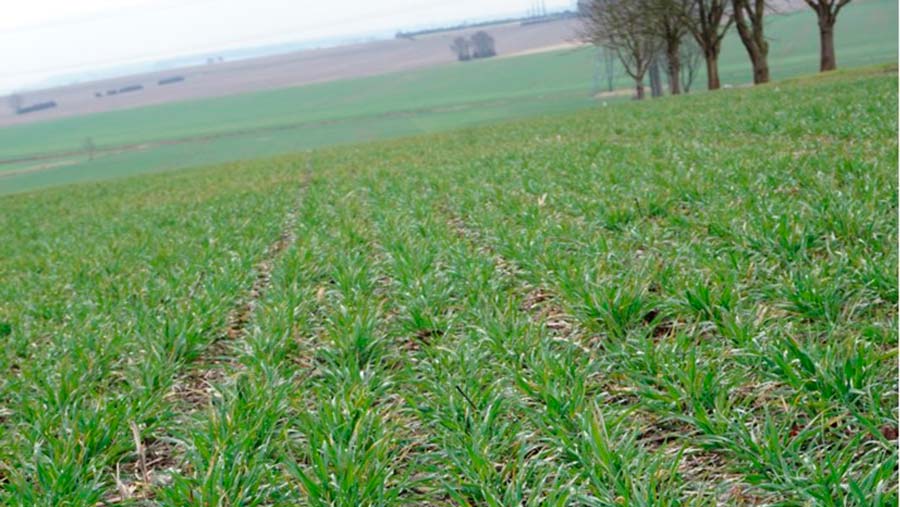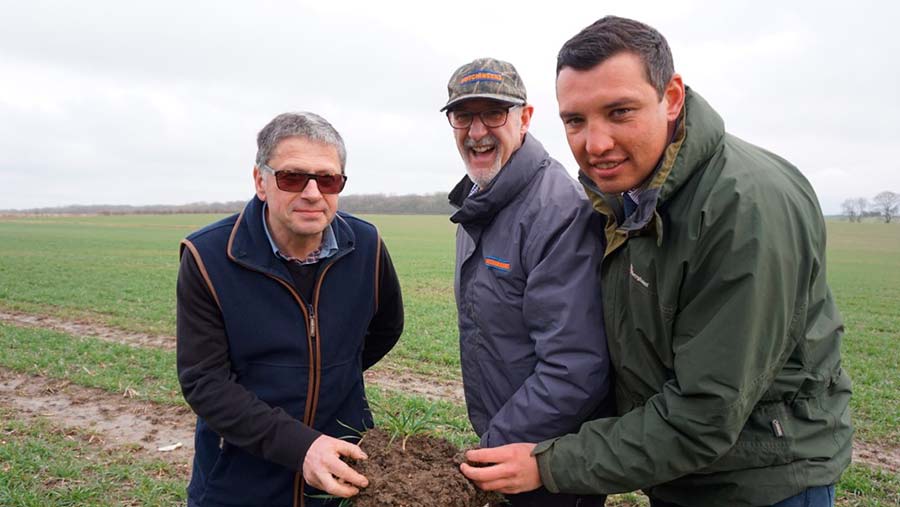How moving less soil helped farmer thwart blackgrass

A Cambridgeshire grower is starting to overcome a costly blackgrass problem after moving from a ploughing approach to a min-till cultivation strategy.
Since adopting shallow tillage and widening the farm’s rotation six years ago, Adrian Abblitt has seen an extensive reduction in grassweed numbers – with soil health improving and costs coming down.
By minimising soil disturbance to prevent weed germination and making sure crop residues are chopped finely, both his heavy land and its blackgrass burden have responded well to the use of a surface tillage regime, based on a Cousins Surface Pro cultivator.
See also: Why strip-till is key part of one farmer’s cultivations approach
With the help of agronomist Simon Wilcox from Hutchinsons, Mr Abblitt has also introduced spring cropping across one-third of the 660ha he oversees from his base at Grange Farm, Steeple Gidding.
The farm has also dropped second wheats and carried out the necessary drainage, ditching and moling work.
“We’ve turned the corner with blackgrass, which was our original aim”, says Mr Abblitt. “But we’ve also reduced the amount of fuel we use, made our soils much more resilient and improved our timeliness.”
Turning point
Accepting that his previous plough-based cultivations may have been making the weed situation worse was the turning point, he acknowledges.

Adrian Abblitt (in sunglasses) with his Hutchinsons agronomy advisers Dick Neale and Simon Wilco
“Having changed to a system that works at a maximum depth of 5cm, it is quicker and cheaper to get round the farm. The soils now drain better and earthworm numbers have increased – things we are told are going to be even more important in the future.”
As a result, the plough hasn’t been used for a number of years and there has been no need to do any subsoiling, he adds.
“We picked up some of the ideas from Hutchinson’s Brampton blackgrass site, which is very close to here. Since we introduced shallow tillage, we have done some fine-tuning most years to improve our results.”
Crop residue
One tweak to the system is to make sure residue is chopped to a length of 50mm so that it spreads evenly and is incorporated into the surface layer of soil.
“Getting that right has helped with soil structure and allowed us to start increasing soil organic matter.”
That is backed up by Hutchinsons giving his soils a Vess test score of 4. Vess is a well-recognised benchmark of soil structure and a score of 4 is the best a heavy soil with 40%+ clay is likely to achieve.
Growing winter wheat, spring barley and winter oilseed rape as his main crops, Mr Abblitt also brings spring beans and spring oats into the rotation as required.
Wheat drilling takes place in the last two weeks of October, so that there is time to take out flushes of blackgrass before the crop goes into the ground.
Instant seed-bed
“Where wheat is following oilseed rape, we leave the field to green up and get some natural predation of weed seeds. It is then sprayed off and we do one pass with the cultivator at the end of September, which creates an instant seed-bed.
“The wheat is then drilled after a two-week gap to allow another flush of weeds.”
Slugs were slightly more problematic after oilseed rape to begin with, he reports, but growing the break crop less frequently has helped to reduce their effects.
“They’re another reason why residue management is important.”
Looking ahead, Mr Abblitt hopes to increase crop yields and will be looking for other ways to raise soil organic matter.
“We haven’t introduced cover crops yet, which is one option. I was reluctant to do that while we were concentrating on getting blackgrass under control.
“We tried some compost, which was a nightmare, so we won’t be repeating that experience”, he says.

